Testimonials
Tour destinations
Top destinations in Laos

The Mekong River, the longest river in Southeast Asia, it’s estimated length is 4,350 km, flows through the entire Laos, from the north (Luang Namtha province) to the south most province of Champasak before it drains into the South China Sea after passing through Cambodia and southern Vietnam.
Laos is a completely landlocked country, that’s why the Mekong River is important to the country as its people depends on the river for their food and water supply.
Most of the land is mountainous which widely covered by unspoiled diverse and rich tropical and sub-tropical forest, which created spectacular limestone mountains, caves, waterfall…. Let explore the beautiful, one of the least visited country in the world through our picked list.
Luang Prabang

The most popular place to visit in Laos, Luang Prabang is an historic city that once served as the capital of the Kingdom of Laos. Today, it remains the unofficial tourist capital. Set at the point where the Mekong and Nam Khan rivers meet, Luang Prabang stands in front of a backdrop of a magnificent hilltop temple. All things considered, it’s probably one of the most picturesque cities in Southeast Asia. Small it may be, but Luang Prabang is packed with many things to see and experience.
While in Luang Prabang, you will want to wake up early to witness the daily tak bat, where hundreds of the community’s monks, clad in saffron robes, silently walk through the streets to gather alms. Explore the beautiful Pha Tad Ke Botanical Garden, home to more than 2,000 species of plants, and take your time bartering for souvenirs and rice wine at the local street market.
Luang Prabang is a great base for exploring some of Laos’ most famous attractions on a day trip. The most popular of these is a visit to the glorious Kuang Si Falls, a multi-level waterfall with multiple fast-flowing pools.
Vientiane

Vientiane is the charming capital of Laos and even though this is technically a capital city, it still feels like a small town rather than anything else.
Vientiane used to be a former French trading post during the colonial period, and as a result it has a delightful old French quarter that you can explore.
There are several temples to explore, but the best way to experience Vientiane is with a stroll along the Mekong River at sunset, browsing one of the riverside markets along the way.
The most popular tourist attraction in the city, also known as “the city of sandalwood,” is a Buddhist stupa, Pha That Luang, which dates back to 1586. The stupa stands 49 meters (147 feet) tall and is believed to contain relics of Buddha. Wat Si Muang, another popular site, is built on the ruins of a Khmer Hindu shrine.
Phonsavan & Plain of Jars
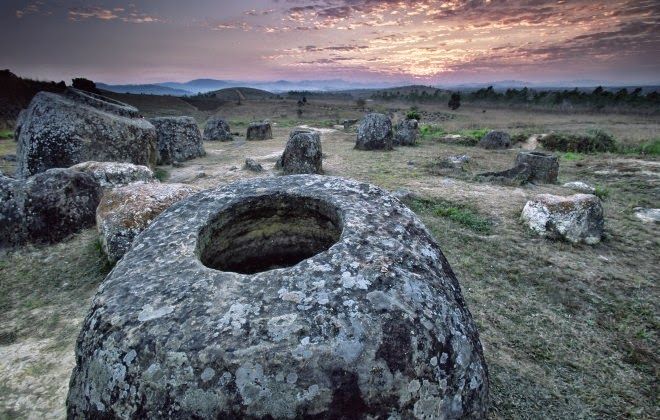
Phonsavan is the provincial capital of the Xieng Khouang Province in Central Laos, and the gateway to the Plain of Jars. Built in the 1970s to replace the old town that was destroyed during the Second Indochina War, the town is characterized by brightly colored wooden houses and cattle fields tended by Hmong cowboys.
Surrounded by undulating hills and pine forests, the scenic town of Phonsavan (which aptly means ‘Hills of Paradise’) has a great climate all year-round. The main attraction is the megalithic archaeological landscape in Laos that’s made up of thousands of stone, jar-like structures dotted about the valleys. Believed to have been used as graves or to store rice wine, the remains of these mysterious stone jars are one of the most famous prehistoric sites in Southeast Asia.
But there is so much more to Phonsavan than the Plain of Jars, especially if you love the outdoors. The outskirts of the town also offer some immense scenery to be discovered on a trekking adventure – from cascading waterfalls to secret caves and secluded pools.
Wat Phou - Champasak

Set on the west banks of the Mekong, Champasak is a sleepy town sandwiched between the river and mountains. It’s primarily known for being the gateway to UNESCO World Heritage-listed Wat Phu.
Despite its location just 30 km south of Pakse, Champasak is not really on the tourist trail, caused it not a convenience to stopover but it’s worth for a detour. The town is historic and charming, with a single road running along the Mekong lined with decaying colonial manors that were once royal residences, side by side with wood-shuttered Chinese shophouses and traditional wooden homes.
Wat Phouis also known as Vat Phou and is a gorgeous Khmer temple which is close to the Phu Kao Mountain in the Champasak Province of Laos. This is a Hindu temple which was built between the 11th and 13th centuries and this would have been a strategic location in the mighty Khmer Kingdom that stretched from Angkor in neighboring Cambodia.
Nowadays you will find similar temples in style to those at Angkor which are also partially eroded by the jungles of Laos.
Vang Vieng
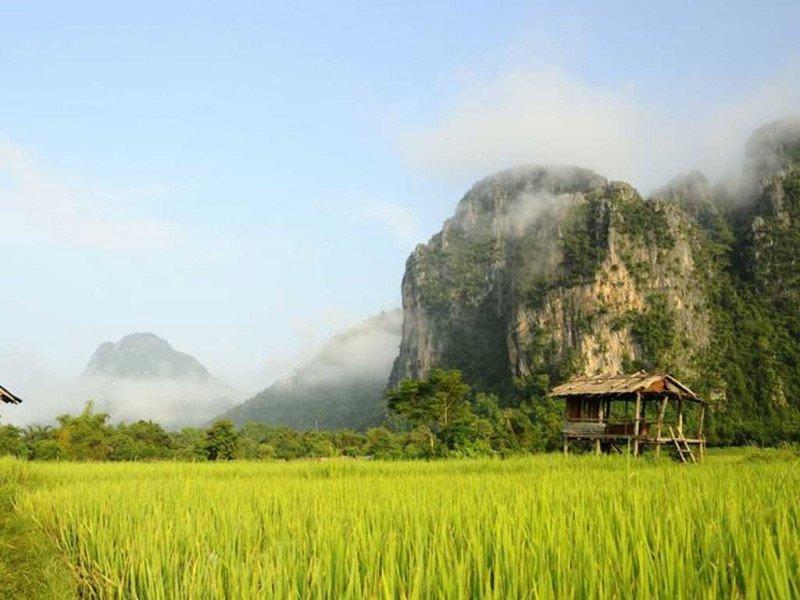
Surrounded by wild fields in Central Laos, Vang Vieng is rich in natural beauty and splendour amid majestic mountains on the banks of the Nam Song River.
Many people said that Vang Vieng is small tourist town, popular with party-seeking young backpackers with river tubing but the truth is not only that. Vang Vieng’s scenic river, the limestone karst-filled mountains that surround the town are an amazing location, offering some of the most inspiring natural hotspots that Laos has to offer, such as the magnificent Kaeng Nyui Waterfall, the peaceful Blue Lagoon, and the sacred Tham Phu Kham and Tham Chang caves…along with some nice of boutique hotels, it is much more than a town for packagers travellers.
Si Phan Don
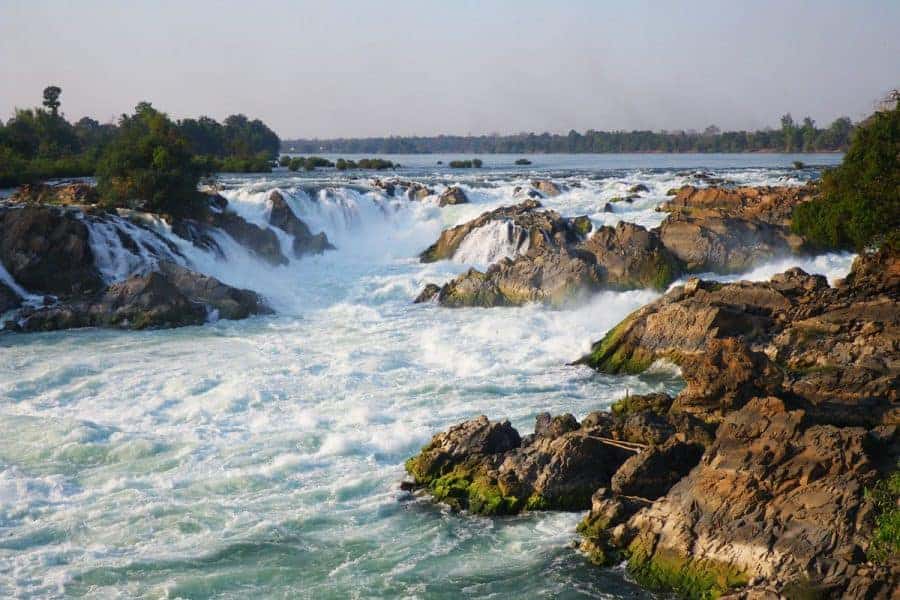
Si Phan Don, which means ‘Four Thousand Islands,’ is a series of different-sized islands dotted along the Mekong River in Southern Laos’ Khong District. The main island of Don Khong (the largest island) has a few temples and a museum, but there isn’t a whole lot to do on the islands, especially when half of them are underwater after the annual Mekong flooding.
But with their backdrop of rice fields, waterfalls, and farmland scattered with riverside huts, that’s all part of the charm of Si Phan Don. Sitting on the border with Cambodia, Si Phan Don’s culture has a mixture of Laotian and Cambodian charm. Spend your days spotting freshwater Irrawaddy dolphins off the coast of Don Khong and photographing the remains of Laos’ first railway, the Don Khon narrow gauge railway built by the French as a way to get around the massive Khone Phapheng Falls.
For those who can’t enjoy the slow life of this river archipelago, there are some activities to keep busy. Rent a bike and explore the two main islands – Don Det and Don Khon, where you can explore one of the big Mekong Falls on two wheels, by boat, or on foot.
Luang Namtha
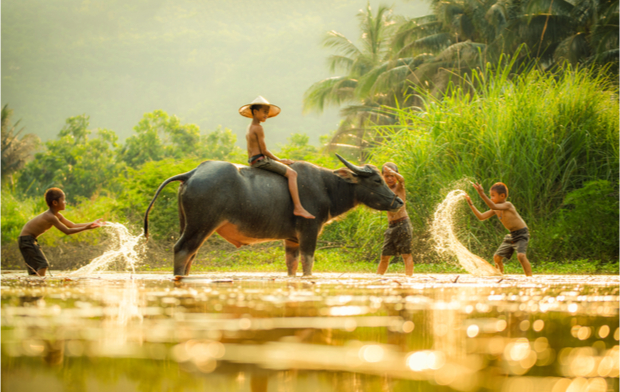
Located along the riverbanks of the Nam Tha, one of the dozen tributaries on the Mekong River, the town functions mainly as a stopover on the backpacker route between China and Laos – or as a way to break up the longboat journey between Huay Xai and Luang Prabang.
What makes a visit to this village so special is its easy access to the traditional hill tribes of Laos located in the Luang NamTha National Protected Area. There isn’t a whole lot to see in Luang Namtha itself, but it’s home to the Luang Namtha Museum – an anthropological museum where you can learn more about these fascinating local tribes. The little town is split into old and new; the former having been bombed during the 1970s war makes for an interesting discovery.
NPA trekking trips are common, and you can usually shop around in the village to find a good deal. Many include extra add-ons such as visits to waterfalls, mountain biking, and kayaking. For those who prefer to explore on their own, there are mountain bikes and motorbikes for hire so you can explore the surrounding jungle and villages at your own pace.
Tham Kong Lo
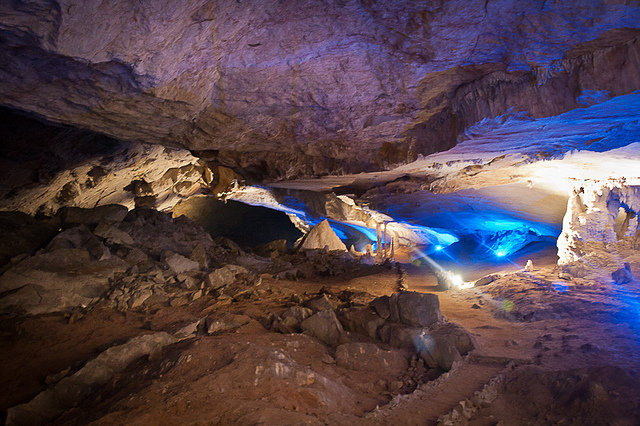
Tham Kong Lo is an incredible underground karst limestone cave tucked away inside Phou Hin Bun National Park in Central Laos. Also known as Konglor Cave – which means ‘beauty in the dark’ – the cave is accessible only by longtail boat. You can chug along one of the longest river cave systems in the world with your way illuminated by magical miner’s lamps.
The boats will stop at certain points, where you will be able to explore the cave more thoroughly on foot. Recently added colorful lights create a charming and theatrical light show to what was once a pitch-dark caving adventure.
Tham Kong Lo is not the most easily reached destination in the country: it’s an eight-hour bus ride on a pothole-ridden road from Vientiane. Yet visitors still travel from far and wide to witness its secret caverns, mysterious stalactites, and otherworldly limestone formations.
Nong Kiau

Nong Kiau, sometimes called Nong Khiaw, is a popular tourist destination in Luang Prabang Province because of its many walking, mountain climbing and biking opportunities. A must-see site is the bridge across the Nam Ou River that was built by China. The bridge connects the two parts of Nong Kiau, and is a good place to see stunning views of the river and mountains. Nong Kiau is a rustic village, so visitors shouldn’t expect truly luxurious accommodations. Spelunkers may enjoy exploring the Pha Tok Caves that are located about a mile from town. The caves housed villagers during the Second Indochina War
Bokeo Nature Reserve & Gibbon Experience
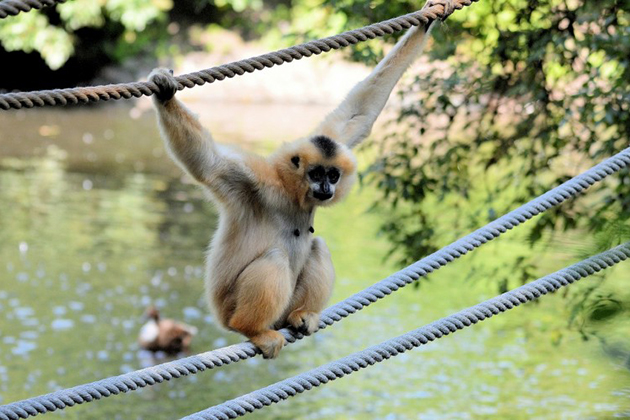
The Bokeo Nature Reserve was created to protect its population of the black-cheeked gibbon, rediscovered in 1997, which was previously thought to be extinct.
A visit to Bokeo Nature Reserve is not complete without a stay at the Gibbon Experience, an eco tourism conservation project.
Guests stay in tree houses and travel by zip line through the forests in search of the Black Gibbon. Besides the elusive black gibbon, visitors to the reserve may also see elephants, bears, tigers and wild buffalo.
The Gibbon Experience also works to rehabilitate and return to the wild animals that were captured by poachers. With mountains ranging from 1,600 to almost 5,000 feet in altitude, the reserve also is a good place to watch birds.
Nam Et - Phou Louey NPA - Nature Trek & Nam Nern Night Safari
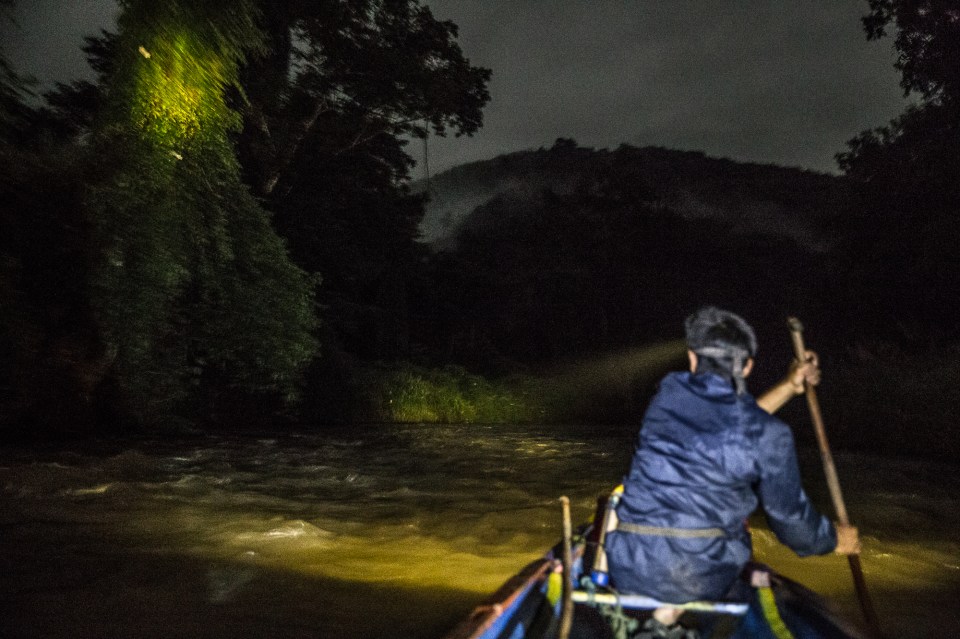
The Nam Nern Night Safari is a wildlife-spotlighting adventure by boat deep in the jungles of Nam Et-Phou Louey National Protected Area, located in Houaphan Province in the northeastern Laos.
Nature trekking tour: Since 2016, Nam Et-Phou Louey National Protected Area offer new ecotourism attractions: the wildlife conservation trekking tours.
The trekking project offers an unique opportunity to enter one of the most important wildlife habitats of the Total Protection Zone of Nam Et-Phou Louey and track wild species such as wild cats, bears and the wild dog (dhole) using camera traps which are set up along the trail and maintained by tourists.
The data from these camera traps is then incorporated into the protected area’s wildlife-monitoring program and stay overnight in an ecolodge built and managed by an ethnic community and learn about wildlife conservation, medicinal plants, traditional agriculture and history of the Secret War.
Proceeds from the tour benefit wildlife protection and small-scale community development. This is one of the only places in the country to see wildlife, which include Sambar and barking deer, civets, porcupine, hog badger, slow loris, macaques, dhole, and Asian golden cat.
Xayabouly province & Elephant Conservation Center

Located in the west of Laos, Xayaboury is home to rugged mountains, hill tribes, pristine jungle and wild animals, including the largest number of wild elephants in Laos. Every year in February or March, a three-day festival draws people from around the country to celebrate the importance of Laos’ national animal.
The Elephant Conservation Center acts to preserve and protect the Asian elephant, a species that is on its way to extinction. Created in 2011 by a team of experts, its program is set up around the well-being of the animal, the reproduction, vet care, and the schooling of mahouts.
The Center only welcomes elephants that have been working in the logging industry or mass tourism, but there are also some elephants that were born because of the Baby Bonus programme, which was set up by the Center.
Nowaday, there are about 30 elephants big, can enjoy 530 hectares of protected forest in the center. This large area is of great importance to the quality of life of the elephants.
Bolaven Plateau
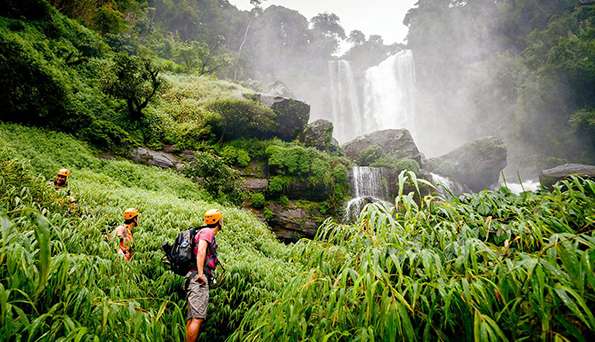
The Bolaven Plateau is one of the most beautiful places in southern Laos. You can find different naturally gorgeous things grouped together to create a fabulously enticing scene.
Locals live in peace with different ethnic groups, proud of what nature has given them. Large hills, tall trees, forests, cliffs, and ancient volcanoes, plus different local dishes make the Bolaven Plateau one of the best destinations in Laos for nature lovers.
The Bolaven Plateau is the home to some of the most amazing waterfalls in Laos including Tad Fane, Tad Lo, Tad Tayicseua, Tad Yeung, or Tad Phaseum. Also, it is famous for the best tea and coffee plantation in Laos. Spend at least 3 days to explore the plateau to have the best out of what it has to offer.
Oudomxay & Muang La
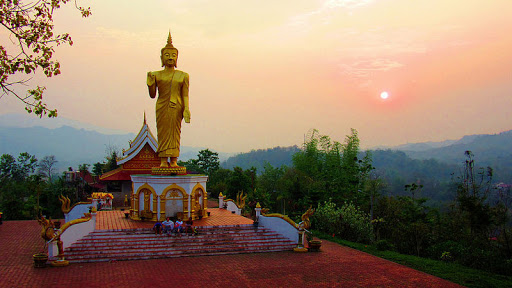
Oudomxay or Udomxai, also known as Muang Xay is the capital of the larger Oudomxay Province, considers as the largest city in the northern part of Laos. This town is also close to the scenic Nam Ko River Basin and is known for its gorgeous mountain ranges, ideal place for caves-lovers and spelunking.
Only 28 kilometres north of bustling Oudomxay, Muang La is a picturesque town nestled beside the Nam Pak River, a settlement of tranquil farmland and Khmu villages wrapped by rolling mountains. Muang La’s main attraction is the natural hot springs –a place to tonic for both the body and soul.
Besides, Nam Pak and Khmu village offer gentle pastoral scenes and glimpses of daily life. Visit Wat Pha Singkham, a pilgrimage site home to a sacred 400-year-old Buddha, one of the most important in Laos.
Pakbeng
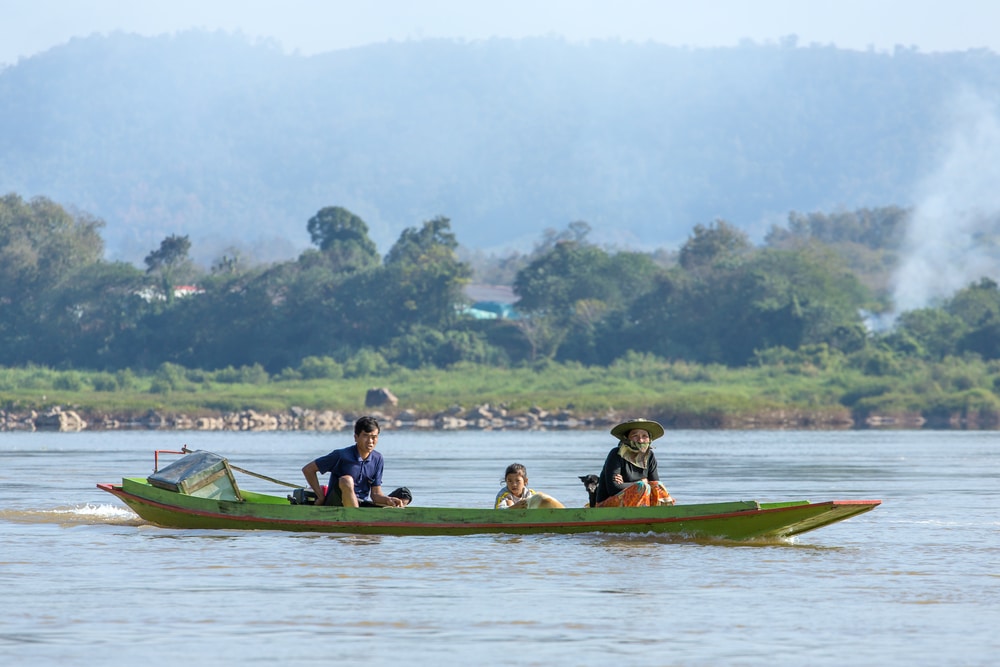
Pakbeng is located between Luang Prabang and Huay Xai and one of the main reasons that people visit is to stay overnight if you take a river trip between the two towns down the Mekong.
There is not a huge amount to do in Pakbeng but it is a lovely little spot to spend the night en route to Luang Prabang or Huay Xai.
There are a few nice restaurants in town that look out over the river and this is a great place to come for a cold beer and sunset views over the majestic Mekong.














